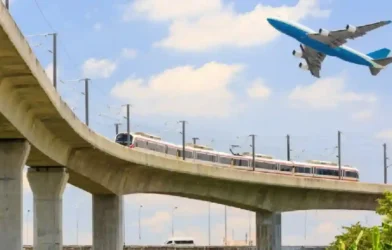Subtotal ₹0.00
Though short of some crucial direct measures to benefit the real estate sector, particularly affordable housing, the FY 26 budget is purposeful and provides a multi-pronged push to lay a resilient and robust roadmap for real estate growth.
Vinod Behl
Maintaining a fine balance between growth and macro-stability , the budget ticks the right boxes to put real estate on a progressive path , especially in the backdrop of decline in home sales in 2024 due to drop in disposable income , rising home prices and high home loan rates.
In order to boost housing demand, the budget bets big on the middle class by majorly boosting their disposable income through landmark income tax relief, taking 10 million people out of the tax net and providing 1 lakh crore tax giveaways to the middle class. The housing demand gets further pushed with greater allocation under the PMAY scheme, provision of additional 1 crore urban homes under PMAY and reintroduction of interest subsidy . Allowing ownership of two self-occupied homes without additional tax implications and additional stress funding of INR 15000 crore to complete stalled houses , are other catalysts for housing demand. All these measures will also help in boosting the end-user market and check artificial spurt in pricing.
Ramping up urban infra through INR 1 lakh crore fund and 1.5 lakh crore interest-free loans to states , push to PPPs and bolstering connectivity , especially through boost to regional connectivity, will provide a new real estate growth opportunity in emerging Tier 2-3 destinations.
But despite all these hits, there have been some significant misses as well. To enhance housing affordability to promote home ownership, the budget needed to hike the affordable housing price cap to help more home seekers to avail benefits of PMAY scheme, besides offering tax relief to both buyers and developers of affordable housing. Tax relief on rental housing and reforms on capital gains are other misses in this year’s budget.
It is an open fact that affordable housing is a key to achieve ‘Housing for All’. The shrinking supply and demand in affordable housing is a cause for worry. Affordable housing sales declined from 38% in 2019 to 18% in 2024 while supply has declined by 30% on average in the last one year while in Mumbai it is 60%.To boost supply, the government needs to create affordable housing zones by unlocking land and making it available at reasonable rates to developers, besides reducing GST on construction materials, providing cheaper finance and bringing down compliance costs. Tax incentives to homebuyers , lowering GST on under-construction homes and rationalising stamp duties will help push demand. Along with all these additional incentives , lowering of interest rates will help in achieving the mission of ‘Housing For All’ and further enhance the attractiveness of real estate as an asset class for investment.












